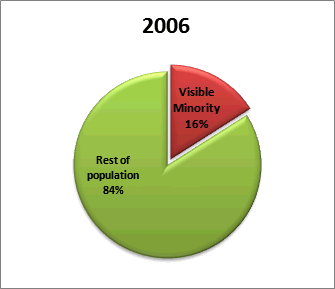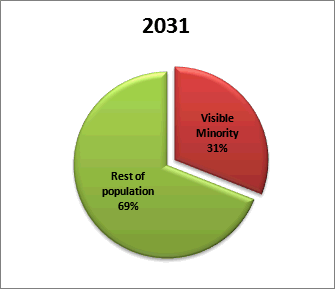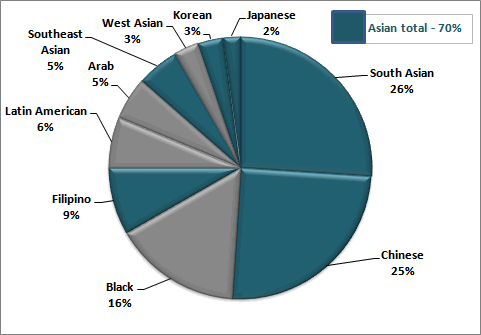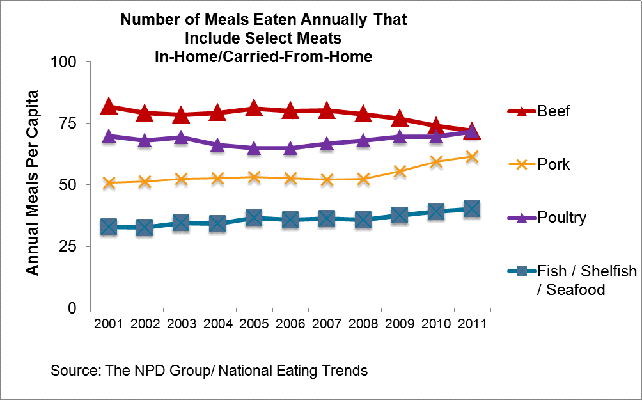| | Introduction | Population projections | Eating patterns among Canada’s population groups | So what? (Implications) | Source of information
.
Introduction
Evolving demographic composition based on ethnicity is one of the leading trends in Canada. Much of the immigration into Canada is coming from Asia. This is a very diverse group. Given that Asians include Chinese and Indians, there are indeed major differences when it comes to cultural, linguistic and socio-demographic considerations. The impact of immigration on Canada will likely be varied and uncertain, but an understanding of commonalities in eating patterns among the Asian population in Canada may provide potential business opportunities. Mainly, business opportunities may be created in two different areas:
- Understanding their main behaviors will enable agrifood business to communicate to Asians that resonate and address their needs through
- Advertising and media strategies
- Packaging sizes
- Pricing promotions
- Understanding their eating patterns will help to spread new culinary experiences to established Canadians.
Population Projections
,
- Net migration to Canada is forecasted to grow at a rate of 14.6% over the next decade.
- Given the impact of immigration on Canada’s population growth, a greater proportion of Canadians will be from a visible minority group in the future.
 
| Source: Statistics Canada (2010). Projections of the Diversity of the Canadian population 2006 to 2031. |
- Two third of Canada’s visible minorities are Asian descent

Source: Statistics Canada 2006 Census
- Canada’s three largest cities: Toronto, Vancouver and Montreal represent 34% percent of Canada’s total population, and 63% of the immigrant population. However, the higher growth rate of visible minorities in Canada as compared to these cities indicates that the impact of changing demographics in Canada will be felt beyond Canada’s largest cities.
- Newcomers are more likely to live in households with more people.
Eating Patterns among Canada’s Population Groups
According to NPD’s National Eating Trends, population is categorised into three groups:
White
Asian: Chinese, South Asian (East Indians, Pakistani, Sri Lankan, etc.), Southeast Asian (Cambodian, Indonesian, Laotian, Vietnamese, etc.) and other Asians
Other: Blacks and other population groups
- Asian consumers are more likely to source and eat their meals at a restaurant (across all occasions), and they are more likely to carry their meals from home as compared to rest of the Canadians.
- Asian Canadians look for Oriental dishes when they eat outside of the home, but they also look for foods more typical to North Americans such as sandwiches and French fries. This suggests that the adoption of the behavior patterns of the surrounding culture (acculturation) might occur outside of the home in social situations.
- Fruits remain the top food eaten by all population groups. However, fruits that are considered “tropical” appeals to Asian consumers.
- Asians are more likely to choose pork, poultry and fish. An overall decline in beef consumption may suggests that Canada’s changing demographic profile has an influence on the proteins that Canadians eat.

- While Asian Canadians are more likely to skip breakfast, this population group skips fewer meals overall. It also shows that hot breakfasts such as eggs, pancakes and bacon have an appeal for this population group.
- Attitudes towards health among Asian consumers differ from the rest of the population. For instance, they are less likely to be overweight, less likely to be on a diet, and also less likely to consider people who are overweight attractive.
So What? (Implications)
- Recognize that there are considerations beyond price and value that drive consumption among Canada’s immigrant community
- Consider the changing demographics within Canada in determining advertising and media strategies, packaging sizes, pricing and promotions
- Look to bridge the gap between the traditional North American and ‘international’ diets by incorporating foods that immigrants are more likely to eat
- Positioning products around ‘all natural’ and nourishment will likely have greater resonance with Asian Canadians
Source of Information
Eating Patterns in Canada (EPIC), 14th Edition, NPD Group, 2011.
The primary source of the EPIC report is based on three different NPD Group services:
- National Eating Trends (NET) which tracks consumption behavior relating to retail and restaurants
- CREST Canada which collects information about purchase of prepared food and beverages at restaurants
- Health Track Canada which adds attitudes and diet status to NET data base
- Snack Track, which tracks the consumption and sourcing of snack foods by individuals
- Statistics Canada
Report in pdf version |
|